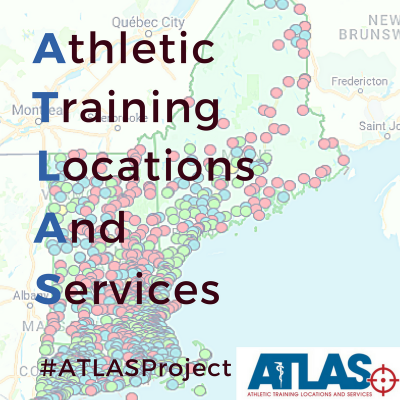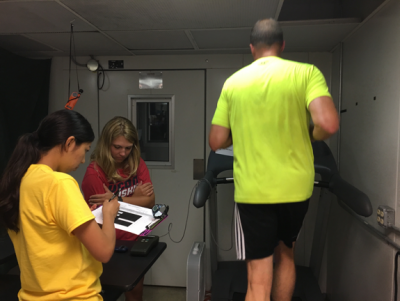Miwako Suzuki, KSI Intern Fellow
My name is Miwako Suzuki, and I am an Athletic Training student at Indiana State University. Gratefully, I was chosen to receive the opportunity to intern at the Korey Stringer Institute in the Summer Fellowship Program. I am originally from Japan, and I studied Athletic Training there as well. While receiving my education in Japan, I found it necessary to learn more about prevention and management of emergency conditions, and this sense of mission brought me to the United States. I became aware of the KSI four years ago when I was still in Japan through Dr. Yuri Hosokawa, Vice President of Education and Communication at the KSI, and I have been attracted to the KSI since then. The past two months and ten days that I spent with the KSI members were full of great experiences and learning.

Among the several projects that I worked on during the summer, the main focus was placed on the Athletic Training Locations and Services (ATLAS) Project. The aim of the ATLAS Project is to determine the extent of current athletic training services provided in the secondary school setting, and it was launched in January 2016 with these goals:
- Create a real-time database of athletic training services in secondary schools
- Create a directory for each state’s athletic training association and high school athletics association
- Assist states in moving toward full-time athletic training services
- Provide useful data to each state’s athletic training association and high school athletic association
- Identify common factors associated with increased athletic training services across the country
- Provide data to assist with legislative efforts to improve healthcare for high school athletes
At the beginning of the summer, the ATLAS Project was at the stage of figuring out the extent of athletic training services in the last 10% of high schools that we had been unable to reach. To reach those schools, I have tried multiple methods such as making phone calls, writing emails to athletic directors, and searching their website for athletic trainer’s information. Even though I made some progress with these strategies, the most effective method was reaching out to athletic trainers of the neighboring high schools of the unknown schools for help. From this experience, I have learned firsthand that ATLAS is not only a great database but also a very useful communication tool. While interacting with high school athletic trainers throughout the nation, many of them showed their appreciation and support for this study. I am very grateful to be one of the members to propel this important project forward. I would like to thank Dr. Robert Huggins for including me in this project and always guiding me. I also would like to thank Sarah Attanasio, ATC, for teaching me and providing help whenever I asked.

Testing for the Falmouth Road Race study began in mid July. We conducted a modified heat tolerance test on recreational runners of a wide range of ages who are participating in the New Balance Falmouth Road Race on August 20th, 2017. Although the study will not be completed until the race day, collecting data on individuals’ physiological responses to exercise in the heat was a great learning opportunity for me. I believe that the wide distribution of demographics of this study allowed me to encounter various responses among the subjects. With regard to conducting a laboratory test, I observed the effort of the KSI members to make the study robust. I was very fortunate to learn from such experienced and passionate colleagues. I would like to express my deepest gratitude to Dr. Yuri Hosokawa and Kelsey Rynkiewicz, ATC, for their effort to involve me in this study.
On August 20th, which will be my last day as a KSI fellow, I will be at the New BalanceFalmouth Road Race and will serve as a medical volunteer with the KSI staff. The Falmouth Road Race has been recognized for its high incidence rate of exertional heat illnesses because of the environmental conditions and its short duration (7.1 miles), which allows runners to maintain relatively high intensity throughout the entire duration of the course. According to a previous study from the KSI, this race has saved multiple exertional heat stroke patients each year. Since I have never encountered a real exertional heat stroke case, I would like to take this opportunity as a great hands-on learning experience.
I appreciate every aspect of the activities that I had the opportunity to take part in at the KSI. The KSI was an even greater place than I expected. All the members are making a great effort for their projects with the strong passion and commitment for the KSI’s mission. I believe that this is the reason why the KSI has been successfully leading our profession. Lastly, I would like to thank Dr. Douglas Casa for providing such a great opportunity. I fully enjoyed summer 2017 with such great colleagues.